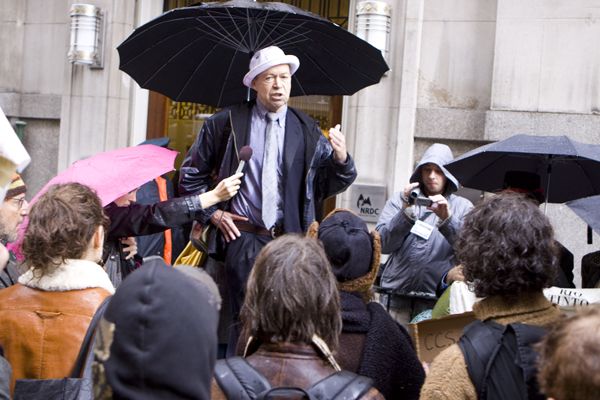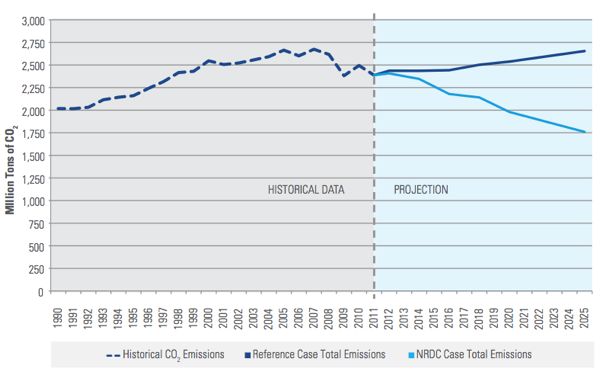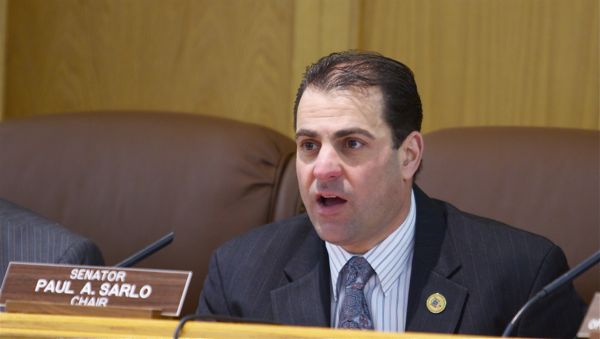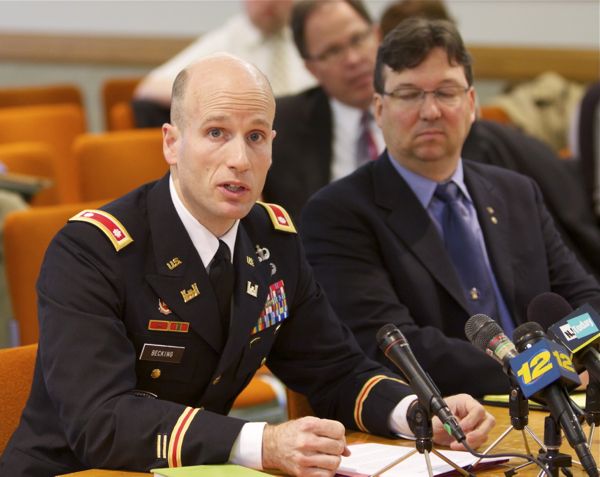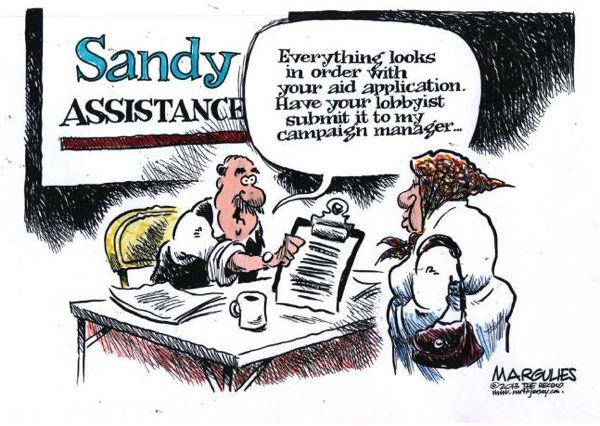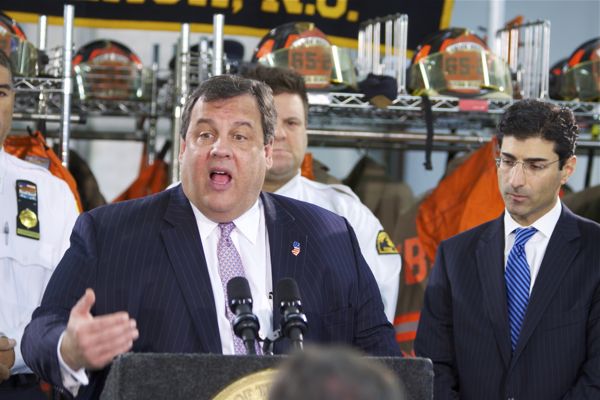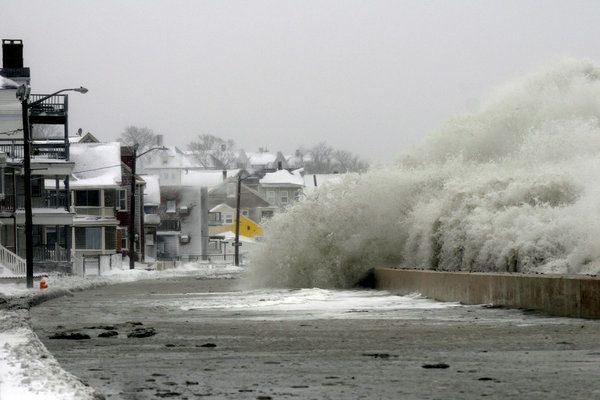Obama Seeks To Revive Cap and Trade Legislation (Not Really, That’s Just Cover)
EPA Regulatory Strategy Likely To Share Many Aspects of Failed Cap and Trade Approach
“The Huge Mistake” In Regulatory Drag?
Science and Politics Shifting – More Ambitious Program Required
“Cap and trade with offsets would guarantee that we pass climate tipping points, locking in climate disasters for our children. Cap and trade benefits only Wall Street and polluters, sacrificing humanity and nature for their profits.” Dr. Jim Hansen Nov. 30, 2009
In light of President Obama’s State of the Union address, I thought I’d dust off prior posts on the failed cap and trade bill Obama just recommended that Congress reconsider and enact.
As expected, building on remarks on climate change in his Inaugural speech, Obama’s SOTU called on Congress to enact cap and trade legislation:
The good news is, we can make meaningful progress on this issue while driving strong economic growth. I urge this Congress to pursue a bipartisan, market-based solution to climate change, like the one John McCain and Joe Lieberman worked on together a few years ago. But if Congress won’t act soon to protect future generations, I will. I will direct my Cabinet to come up with executive actions we can take, now and in the future, to reduce pollution, prepare our communities for the consequences of climate change, and speed the transition to more sustainable sources of energy.
Surely Obama realizes that cap and trade is dead on arrival in Congress, particularly in the Tea Party Republican dominated House. So, my sense is that this was just a throw away line, to provide cover for his “executive actions”.
(for inside the beltway perspective, e.g. Obama “threat”, see WaPo: In State of the Union, Obama threatens Congress on climate change)
Before touching on the cap and trade issues, I must note that Obama’s vague treatment of climate change emission reductions is in strark contrast to his specific proposals for more fossil energy.
Obama has retained his “all of the above” energy policy, which stresses “economic growth”, “energy security” and “low costs”, which are fundamental barriers to real reform.
Resources are finite and significant emissions reductions are required – so “all of the above” can’t work. We simply don’t have the money or the time to do everything. Energy costs much rise signifincatly to provide incentives to reduce consumption and make the revolutionary scale of required investments in renewable power profitable. Economic growth is not sustainable with finite resources and will guarantee we suffer catastrophic and irreversible climate impacts.
Building on his “all of the above” policy, in contrast to vague programmatic commitments on emissions reductions and renewables, Obama was very specific about commitments on more fossil fuel production, which will conflcit with or undermine his emsisions reductions and renewable energy goals:
After years of talking about it, we are finally poised to control our own energy future. We produce more oil at home than we have in 15 years. We have doubled the distance our cars will go on a gallon of gas, and the amount of renewable energy we generate from sources like wind and solar – with tens of thousands of good, American jobs to show for it. We produce more natural gas than ever before – and nearly everyone’s energy bill is lower because of it. And over the last four years, our emissions of the dangerous carbon pollution that threatens our planet have actually fallen. […]
In the meantime, the natural gas boom has led to cleaner power and greater energy independence. That’s why my Administration will keep cutting red tape and speeding up new oil and gas permits. But I also want to work with this Congress to encourage the research and technology that helps natural gas burn even cleaner and protects our air and water.
Nonetheless, aside from these problems that flow from Obama’s energy policy and subordination of all other policy objectives to economic growth, it still is very important that people understand the fatal flaws in cap and trade.
Most importantly, that’s because the cornerstone of the President’s “executive action” is very likely to be a complex regulatory scheme under the Clean Air Act to regulate emissions from over 500 antiquated existing coal power plants.
I’ve written about that several times and will be writing in depth about this set of issues in the near future.
But for now, I leave you with a December Report by the Natural Resources Defense Council (NRDC) (see: Closing the Power Plant Carbon Pollution Loophole: Smart Ways the Clean Air Act Can Clean Up America’s Biggest Climate Polluters
That NRDC Report is essentially the same politics and policy of cap and trade, in regulatory form.
Right off the bat, the NRDC Report is misleading, because it describes just one of several regulatory tools available to EPA under the Clean Air Act, Section 111(d).
But even the Bush Administration’s EPA laid out a much broader set of options, in a 2008 “Advanced Notice of Proposed Rulemaking”, which stated:
SUMMARY: This advance notice of proposed rulemaking (ANPR) presents information relevant to, and solicits public comment on, how to respond to the U.S. Supreme Court’s decision in Massachusetts v. EPA. In that case, the Supreme Court ruled that the Clean Air Act (CAA or Act) authorizes regulation of greenhouse gases (GHGs) because they meet the definition of air pollutant under the Act. In view of the potential ramifications of a decision to regulate GHGs under the Act, the notice reviews the various CAA provisions that may be applicable to regulate GHGs, examines the issues that regulating GHGs under those provisions may raise, provides information regarding potential regulatory approaches and technologies for reducing GHG emissions, and raises issues relevant to possible legislation and the potential for overlap between legislation and CAA regulation.
NRDC fails to learn the political and policy lessons of their prior support for cap and trade and EPA’s regulatory strategy under the Clean Air Act – i.e. a modest program based on pre-movement political feasibility, limited to low cost, flexible, state autonomy, modest emissions reductions, incremental, technocratic, industry expertise/modeling driven approach.
Here’s how NRDC describes the situation:
NRDC’s proposal is designed to give power plant owners freedom to choose how they would achieve the required emission reductions, giving credit for increases in energy efficiency and electricity generation using renewable sources and allowing emission-rate averaging among fossil fuel−fired power plants. States would also have the freedom to design their own approach, as long as it achieved equivalent emission reductions.
The analysis demonstrates that this recommended approach would reduce power plants’ carbon pollution in an efficient and affordable way.
Establishing such CO2 emission standards now will boost investments in energy efficiency and will give the power industry the investment certainty it needs to avoid billions of dollars of stranded investment in obsolete power plants.
Lots of freedom there – freedom to pollute and freedom for captured state regulators to look the other way.
And how does a 50 year old antiquated coal power plant possibly have stranded costs?
NRDC signed off on that not only politically, but actually own it via a litigation settlement agreement:
Ruling in the New York case, the D.C. Circuit Court of Appeals then ordered EPA to reconsider its refusal to curb carbon emissions from power plants. In 2011 the Supreme Court confirmed EPA’s responsibility to address carbon pollution from power plants under Section 111 in another climate change decision, American Electric Power v. Connecticut.33
In 2011 the parties reached a settlement agreement in the New York case with a schedule for EPA to act on CO2 standards for both new and existing power plants.34 Although EPA has fallen behind the settlement schedule, the agency proposed a carbon pollution standard for new plants in April 2012. This is an important step toward EPA’s meeting its statutory duties, but action is still required on the existing power plants, the largest contributor of carbon pollution in America.
In their Report, NRDC sets a very low bar for greenhouse gas emissions (power plant “reductions” are just 12.5% by the year 2025, using a 1990 baseline – see graph on page 4)
NJ’s 2007 Global Warming Response Act law is more aggressive, sestting a larger 20% emission reduction goal five years sooner (by 2020) (same 1990 baseline). NJ has already achieved that 2020 goal, based exclusively on economic factors: the economic recession and fuel switching from coal and oil to cheap natural gas.
Nationally, we assume a similar economic response to emissions, plus additional reductions from coal plants that close due to the high costs of compliance with new EPA mercury, SOx and NOx regulations. So, it is not clear exactly whether and how much the NRDC strategy will reduce power plant emissions at all, compared with business as usual (all that complexity is conveniently buried in an industry and EPA model – which is another technical and political problem with the NRDC strategy).
The scope of what NRDC recommends as the cornerstone of the EPA regulatory strategy is also troubling. It repeats mistakes of the past as well, because power plant sector is only 40% of emissions – other sectors must be included, and it is not clear exactly how the NRDC proposed regulatory strategy and emission credits could achieve this non-power sector reductions.
The NRDC emissions reduction goal and reduction schedule is not based on science, which tells us that much deeper and faster emission reductions are required to avoid the worst and most catastrophic global warming impacts.
The NRDC modest effort comes as climate change activists are ramping up demands and movement politics, with a huge protest scheduled for Sunday, Feb, 17.
Thus, with the science suggesting the need for even more urgent and deeper cuts and the politics shifting, NRDC should have been much more ambitious and set a much higher bar.
Much more to come on this, but until I get a chance to lay out the arguments, watch this superb short video by two EPA lawyers, with over 40 years of experience. They explain exactly why cap and trade is fatally flawed.
So, until I get a chance to write more in depth, read the NRDC Report and then
